NEWS
 |
NASA Pluto Landing Movie
NASA has made a YouTube video of the New Horizons approach to Pluto.
The video starts with Pluto as a small beige dot in the distance and
ends when the probe approaches the icy surface. Very interesting.
Click the link to view. |
|
Gosh |
Asteroid 2017 AG13 Near Miss to Earth
We didn't know what didn't hit us. Evidence is mounting that
it's no longer a question of "if" a city on Earth
will get hit. Instead it's a question of "when"?
On the weekend, according to
the Catalina Sky Survey, a giant rock (as tall as a 10-storey
building) has flashed past the Earth at a speed of 17 kilometres per
second. Impact energy would have been 700 Kilotons (Nagasaki
was just 20 kilotons). Closest distance at fly by was equivalent to half
the distance to the moon.
Further info here.
The number of known near misses is
increasing as the sophistication of the monitoring gear improves.
In the past we just wouldn't have known.
To see what a smaller asteroid is capable of just see
what happened near
Chelyabinsk Russia in 2013 click here.
|
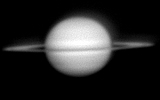 |
Saturn will be in Opposition June 15th 2017
Saturn will be closest to Earth around June 15th this year.
Apparent diameter (including rings) will be approximately 41"
arcseconds. Culmination will occur around midnight so, on a
clear winter's night this should make for some good views.
|
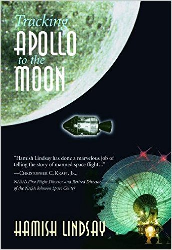 |
Honeysuckle Creek Tracking Station
Read about the history of this important Canberra site
here.
The book "Tracking Apollo to the Moon" is perhaps the most detailed
(and readable) account of the Apollo and early Gemini missions.
It is written by local Canberra author Hamish Lindsay who worked at
the tracking station for many years.
...
|
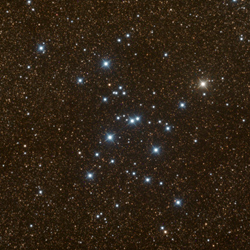 |
2016 CWAS Malin Awards
July 2016: I'm very pleased that my image of "M7 in a
Sea of Stars" has been awarded an Honourable Mention by Dr
Malin in judging for the 2016 Malin
Awards - the premier Australian competition for astrophotography.
To view the
image click here.
...
|
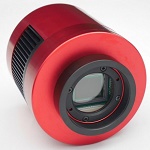 |
New Camera - ZWO ASI 1600 MC Color Cooled One-Shot (OSC) Camera
July 2016: I'm still working on integrating this camera into
my kit. It's too early to say whether it's a keeper.
I've had quite a few problems so far with drivers and finding
suitable capture software, etc. It's been a month now and all
I've got to show so far is a few un-Debayered test FITS files.
(Now resolved and working okay - yep it's a keeper).
...
|
 |
New Scope - GSO RC-8
April 2016: I've bought an 8" Ritchey Chretien scope. It's a
second-hand device but in good working order. At $AU 700 (half
retail) it's a budget buy but it's made by Guang Sheng Optical (GSO)
who have a reputation for producing good value for money scopes.
This telescope is a keeper I think because its already produced a couple of
fine images for me. The focal length of 1600mm is double what
I'm used to with the Schmidt Newtonian (which is 812mm). The
much longer focal length is
a bigger challenge for autoguiding. I've encountered
the problem of differential flexure in the guidescope, so now I've
had to get Off-Axis guiding working. But, so far, so good.
It's given me the sharpest image I've ever produced.
See here.
|
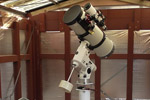
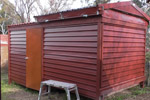 |
My Very Own Self-built Observatory
July 2015: A long time in planning. This was for me a massive undertaking requiring a
lot of thought and much effort.
Along the way I had to learn a lot about building design, construction technique
and power tools.
It's taken over a year for me to build it - but it's now yielding good
results..
My observatory is a post and beam construction with stud cavity
walls and joist noggin floors. It has a fixed tin roof above a
warm room and a roll-off gable roof which rolls back over the lower
roof on the observing room.
The room floors differ from each other in height by a 300mm step.
At the moment the inside remains open however the intention is to
have a glass wall and sliding glass door through the middle of the
shed thus separating the lower floor (warm room) from the upper
floor (telescope platform). The warm room will protect
electrical equipment and provide some respite from those minus seven
degree (-7C) winter nights.
The roofing over the lower deck is galvanised steel sheets with
sarking on the underside to prevent drips from condensation.
The roll-off roof that covers the upper deck is transparent
polycarbonate sheets resistant to impact from 20mm hail and
which are UV-opaque. The sheets have 50% solar heat
rejection (I think the physics of this is amazing).
The pier is a 5-inch diameter steel pipe of 5 mm thickness.
The pier is welded to a footplate that's fastened to eight 12mm
steel bolts that are set in 500kg of concrete a metre into the hard
clay subsoil.
See the
Observatory Page for more details
|
Old
Camera
Doh ! |
Canon 350D Driver Problems with Windows 7
Your Canon 350D (Digital Rebel XT) camera can be set to
its "PC Connection" mode
when you want to use a PC to control the camera. Refer to your
Canon 350D camera's user manual for details of how to select this
setting in your camera. You connect the PC to your camera
using the USB cable that shipped with your camera. Certain
Windows programs communicate with the camera, and let you use the
mouse and keyboard, to set the camera aperture, ISO,
exposure-time, and to let you take photos. PC software which uses the
"PC Connection" mode includes CameraWindow and MaxDSLR, to name just
two that I use.
Unfortunately, with
Windows 7 Home I cannot use CameraWindow, MaxDSLR and other
remote control software that
rely on the "PC CONNECTION" mode of a Canon 350D. This is
because Canon have not released a WIA software driver that fully
supports the 350D's "PC CONNECTION" mode in Windows 7. The
problem does not go away when you run your camera control software
(e.g. CameraWindow) in Windows 7 using "Compatibility Mode for Windows XP".
That doesn't help.
There is a sliver of hope for you. I've tried the following and it
worked for me - a bit.
Please note that in Windows 7 terminology "XP Mode" is definitely
not the same thing as "Compatibility Mode for Windows XP".
If you upgrade Windows 7 Home to
Windows 7 Pro, or to
Windows 7 Ultimate (you
will be granted access to
a feature called "XP
MODE"). With it you can run all your old software
including the Canon 350D WIA driver in an "XP MODE" virtual PC.
Windows 7 lets you run a VIRTUAL MACHINE inside a window on your
Windows desktop which for all intents and purposes behaves like a
virtual PC which is running actual Windows XP. This is known
as "XP Mode". With the more expensive versions of Windows 7
you are granted a free Windows XP Service Pack 3 license that is included with the Microsoft XP Mode
software. Setting up the virtual PC is a little fiddly. It requires you to download "XP Mode" and "Virtual
PC" from Microsoft (free for Windows 7 Pro and also
Windows 7 Ultimate windows
licenses). The whole procedure may prove frustrating for folks
who don't like fiddling with their bytes in bits. Nevertheless,
if you don't mind paying for the upgrade (and the HEADACHE of
setting it all up) you can get started with Wikipedia and by Googling
"XP MODE" or searching Microsoft's website. I persevered
with it all, and eventually (after a couple of days
effort) it worked. For 95% of the time. Most of the time
it worked okay, but every now and then it stopped working.
If
you don't mind, every now and then, unplugging the USB cable,
switching the camera off and on, and "re-attaching" the device to
the virtual machine then XP Mode may be just the thing for you. There
was no rule that I could see
which governed when it would STOP WORKING for me, so I will not rely on this
for my important imaging sessions. If you know how to fix it please
email me.
There is a Canon 350D driver that was designed for Vista (and it
worked kind of on Windows 7).
It was only useful (in both Windows 7 Home and Vista) if I set the Canon
350D's internal communications setting to "PRINT/PTP". This
camera mode lets you use software on your computer to remotely view,
download and delete files directly on the 350D camera. Using
this driver with the camera in its "PC Connection" mode
for a Canon 350D doesn't work for me, so it cannot
let me do remote shooting or adjust the ISO, exposure, etc..
So, if I want to keep using remote camera control for Canon 350D via
my usual software in the usual way,
I'll have to stay on Windows XP until I'm ready to upgrade
everything (new camera, new PC, Windows 7 and camera and other astro
software).***
*** Do not rely solely on the above information without verifying
the truth of it for yourself. I may be completely wrong about
everything. Research it yourself using other reliable sources before
you go buying or trying anything.
|
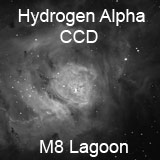 |
July 2010: This
is my first Hydrogen Alpha image. It's also my first photo taken with a cooled
Charge-Coupled Device (CCD) astro camera. The camera is an SBIG ST2000XM (1600x1200
pixel monochromatic) which has kindly been lent to me by Brian Clements who lives
nearby. The high signal-to-noise ratio of a seriously cooled, and seriously serious
CCD is awesome. Check out the "What's New" web
page periodically to see all of my latest images. |
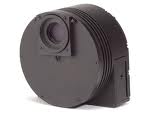 |
July 2010: I've been very fortunate that Brian Clements has
generously lent me his Santa Barbara Instruments Group (SBIG) ST2000XM CCD
camera, replete with filterwheel, LRGB and H-alpha filters set. So, it looks like
Digital SLR imaging will go on hold, while I make the most of this opportunity, and while
I get down to work learning how this beauty works. An SBIG is
big! How on Earth do I fit it securely to the Schmidt Newtonian's focuser? |
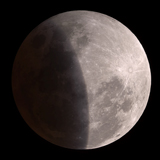 |
| Published In the
ABC News 27th June 2010 This
picture of the partial lunar eclipse made it onto the ABC news website. It is a
composite image consisting of two separate images: one exposure short, the other long. |
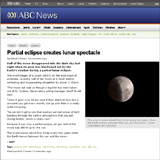
|
|
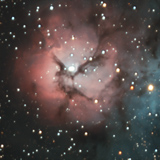
|
June 2010: A Nice Image With The New Telescope - M20 The
Trifid Nebula The rebuilt SN-8 telescope is working very well.
See these images of the
Trifid Nebula (Messier Object M20) taken with the new rig scope and the H-alpha modified
camera.
|
January 2010 New Schmidt Newtonian.
I've bought a new 8" Schmidt Newtonian. I moved its mirror and
the corrector plate to the old Optical Tube Assembly (OTA). This is because the old
OTA has the GSO low-height Crayford focuser installed which is much, much better than
Meade's standard focuser. It was a bit tricky and I had to shim the focuser to get
it perpindicular, but the result is very good. So after all this time I'm back to
where I was - and with a better DSLR camera now.
First light for the new rig was 21Jan2010 and I am very pleased
with the result. See
an image of Eta Carina here. This is one of my sharpest images. The new
rig can fit an off-axis guider which I used for the latest image.
September 2009 New Camera
I bought a second-hand Infra-red modified Canon 350D. Works a
treat.
August 2009 Telescope is broken
The Schmidt Newtonian's corrector plate was smashed when the scope fell to the
ground during an imaging session.
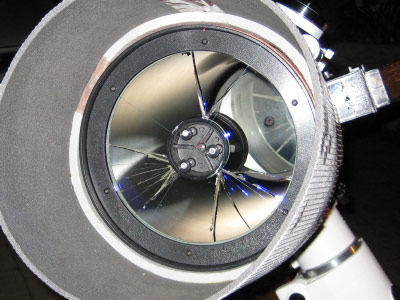 |
The cause was traced to the base of the LXD-75 mount
bar being unsuitable for the new EQ-6's mount head. The ring mount bar that comes
with Meade's Schmidt Newtonian telescope is designed for the Meade LXD-75 mount
head. The bar is not a good fit for the EQ-6 mount head. The
LXD-75 mount has a single retaining bolt centrally located, and it fits into a single
slanted groove on the side of the mount bar. The EQ-6 on the other hand has two
retaining bolts, that are located on either side of centre. These do not line up
with the single slanted goove in the side of the LXD-75 mount bar. Also, the recess
on the underside of the LXD-75 mount bar is not long enough to fit the bigger mount head
of the EQ-6, so it has to ride on top.
Long story short: while at the end of a long imaging run when the scope was near
maximum western rotation (in RA) the two bolts stripped some metal from the mount bar and
the bar, with its telescope and rings attached, fell to the ground.
Cameras, MPCC, and other equipment were miraculously undamaged but unfortunately
the corrector plate on the telescope was smashed. |
July 2009 Malin Awards - Two Awards !
I am very pleased that two of my pictures received honourable mentions at this year's Malin Awards.
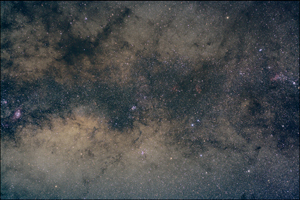 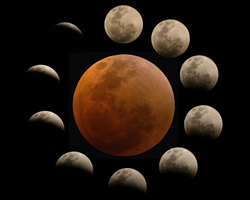
November 2008 Camera Equipment
New hardware has been acquired. This equipment is modestly priced but it
will add significantly to current imaging capability:
a) DMK 21AU04.AS
planetary imaging camera; and
b) Canon EF 200mm f2.8 L
USM II lens for the Canon 350D camera;
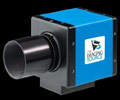
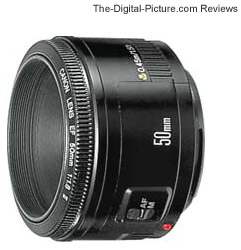
I can't wait to test drive them, but Murphy's Law rulez: cloudy weather is
rolling on in...
October 2008
I bought a GSO 2" (M-MLP) low-profile focuser for the Schmidt-Newt
for $109 from Andrews
Communications. Originally I wanted a high-end ($500) JMI, but I decided to go
with the low-cost option. I was worried about this, and even more worried about cutting
and drilling the tube. I am now very, very pleased I did it. The GSO focuser is a
quality piece of kit. It's sturdy, simple, well crafted, and was easy to install. Compared
to the shocking rack and pinion focuser that came standard from Meade in my Schmidt
Newtonian telescope the new focuser from GSO is absolutely fantastic to use for imaging on
a budget.
Back to Home
|

